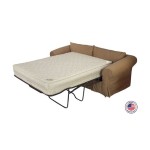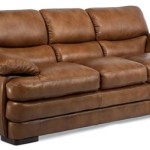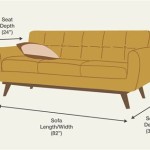Leather Sofas and Cats: A Guide to Coexistence
Leather sofas offer a sophisticated and durable seating option for many households. Their aesthetic appeal and perceived longevity often make them a significant investment. However, for cat owners, the prospect of combining a leather sofa with feline companionship can raise concerns. The relationship between cats and leather furniture is complex, involving both the allure of the material to cats and the potential for damage. Understanding this dynamic is crucial for preserving the investment in a leather sofa while ensuring the comfort and well-being of feline family members.
The primary concern for cat owners considering a leather sofa is the potential for scratching. A cat's natural instinct to scratch serves multiple purposes, including sharpening claws, stretching muscles, and marking territory. Leather, with its smooth surface and often enticing texture, can become an irresistible target. The resulting damage can range from minor surface scratches to deep tears, significantly detracting from the sofa's appearance and potentially reducing its lifespan. However, with proactive measures and a clear understanding of feline behavior, cat owners can successfully maintain a leather sofa in a cat-friendly home.
Beyond scratching, other potential issues include staining from accidents, hair accumulation, and the general wear and tear that comes with pet ownership. While leather is generally considered easier to clean than fabric, certain types of stains, especially those left untreated, can be difficult to remove. Cat hair can also become embedded in the leather's pores, requiring regular and thorough cleaning to prevent buildup. The key to a successful coexistence between leather sofas and cats lies in prevention, maintenance, and providing alternative outlets for feline needs.
Understanding Why Cats Scratch Leather
To effectively protect a leather sofa, it's essential to understand the reasons behind a cat's scratching behavior. Scratching is not simply a destructive act; it's an integral part of a cat's physical and psychological well-being. As mentioned previously, cats scratch to maintain their claws. The act of scratching helps to remove the outer, dead layers of the claw, revealing the sharper, newer claw underneath. This process is essential for a cat's ability to climb, hunt, and defend itself.
Scratching also serves as a form of exercise. The act of extending the body and using the claws to grip and pull provides a full-body stretch that is beneficial for muscle tone and flexibility. Observational studies have shown that cats often stretch and scratch after waking up, suggesting that it serves a similar function to human stretching after sleep.
Furthermore, scratching is a form of territorial marking. Cats have scent glands in their paws that release pheromones when they scratch. These pheromones, imperceptible to humans, leave a scent mark that signals to other cats that this particular area belongs to them. This can be particularly important in multi-cat households, where territorial marking helps to establish a social hierarchy and reduce conflict. The visual marks left by scratching also serve as a visual cue to other cats.
The texture of leather can be particularly appealing to cats due to its smooth, yielding surface. The act of sinking claws into the leather and pulling creates a satisfying sensation for the cat. In some cases, the smell of the leather, especially if it has been treated with certain chemicals, may also be attractive to cats. Understanding these motivations is the first step in redirecting a cat's scratching behavior away from the sofa and towards more appropriate outlets.
Strategies for Protecting Your Leather Sofa
Once the reasons behind a cat's scratching behavior are understood, several strategies can be implemented to protect a leather sofa. These strategies fall into three main categories: providing alternative scratching surfaces, making the sofa less appealing, and training and behavioral modification.
Providing alternative scratching surfaces is perhaps the most effective way to redirect a cat's scratching behavior. This involves offering a variety of scratching posts and pads in different materials and orientations. Some cats prefer vertical scratching posts covered in sisal rope or carpet, while others prefer horizontal scratching pads made of cardboard or corrugated paper. Experimenting with different types of scratchers will help to determine which ones your cat prefers. It is beneficial to place these alternative scratching surfaces near the leather sofa initially. This creates a direct alternative for the cat when the urge to scratch arises. Once the cat is consistently using the alternative scratchers, they can be gradually moved to more permanent locations.
Making the sofa less appealing is another crucial aspect of protecting it. This can be achieved by using deterrent sprays specifically designed for cats. These sprays typically contain ingredients that cats find unpleasant, such as citrus or bitter apple. It is important to choose a spray that is safe for use on leather and to test it on an inconspicuous area first to ensure that it does not cause discoloration. Applying the deterrent spray regularly, especially in areas where the cat is prone to scratch, can discourage them from targeting the sofa. Another option is to use double-sided tape on areas where the cat scratches. Cats dislike the sticky sensation of the tape on their paws and will often avoid those areas.
Training and behavioral modification play a vital role in reinforcing the desired behavior. This involves rewarding the cat for using the alternative scratching surfaces and gently discouraging them from scratching the sofa. When you see your cat scratching the appropriate scratcher, offer praise and a treat. This reinforces the positive association with the desired behavior. If you catch your cat scratching the sofa, gently redirect them to the alternative scratcher. Avoid yelling or physical punishment, as this can create fear and anxiety, which may exacerbate the problem. Instead, use a firm "no" and immediately redirect the cat to the appropriate scratching surface.
Regular nail trimming is also important. By keeping the cat's nails trimmed, the damage they can inflict on the leather sofa is significantly reduced. If you are uncomfortable trimming your cat's nails yourself, a veterinarian or groomer can provide this service. Soft paw covers, also known as nail caps, are another option. These are small, plastic caps that are glued onto the cat's nails, preventing them from scratching furniture. These covers need to be replaced every few weeks as the cat's nails grow. While these covers can be effective, some cats may find them uncomfortable or may try to remove them.
Repairing and Maintaining Leather Sofas in Cat-Friendly Homes
Despite the best preventative measures, some damage to a leather sofa in a cat-friendly home is often inevitable. Knowing how to repair and maintain the leather can help to prolong its lifespan and keep it looking its best. Minor scratches can often be buffed out using a leather conditioner or a specialized leather repair kit. These kits typically contain a filler that can be used to fill in the scratches, followed by a leather dye that matches the color of the sofa. For deeper scratches or tears, professional repair may be necessary.
Regular cleaning is essential for maintaining the appearance and hygiene of a leather sofa, especially in a home with cats. Vacuum the sofa regularly to remove hair, dust, and debris. Use a soft brush attachment to avoid scratching the leather. Wipe down the sofa with a damp cloth periodically to remove surface dirt. For more stubborn stains, use a leather cleaner specifically designed for the type of leather your sofa is made of. Always test the cleaner on an inconspicuous area first to ensure that it does not damage the leather.
Leather conditioner should be applied regularly to keep the leather supple and prevent it from drying out and cracking. The frequency of conditioning will depend on the type of leather and the climate in which you live. In drier climates, more frequent conditioning may be necessary. Applying a leather protector can also help to protect the sofa from stains and spills. There are various types of leather protectors available, including sprays and creams. Choose a protector that is specifically designed for leather and that is safe for use around pets.
Consider the type of leather when selecting a sofa for a cat-friendly home. Some types of leather are more durable and resistant to scratches than others. Top-grain leather, for example, is considered to be more durable than bonded leather. Distressed or antique leather can also be a good choice, as scratches and imperfections blend in more easily with the existing texture and patina. Microfiber, although not technically leather, is a synthetic material that mimics the look and feel of leather and is often more resistant to scratches and stains. If you are concerned about damage, consider choosing a sofa upholstered in microfiber instead of leather.
Finally, be prepared to accept that a leather sofa in a cat-friendly home may not always look pristine. Minor scratches and imperfections are often unavoidable. Embracing the natural wear and tear can help to reduce stress and allow you to enjoy the sofa without constantly worrying about damage. With proper care and maintenance, a leather sofa can still provide years of comfortable and stylish seating, even in a home with feline companions. Remember to focus on providing alternative scratching outlets, deterring scratching on the sofa, and regularly maintaining the leather to minimize damage and extend its lifespan. This multifaceted approach increases the chances of a harmonious relationship between cats and leather furniture.

How To Fix Cat Scratch On Leather Couch Cozy Living
What Type Of Sofa Or Couch Is Best If You Have A Cat And Are Worried About Scratching Quora
Why Is My Cat Ruining Leather Chair Quora

Remove Cat Urine Smell From Leather Couch

Pet Furniture Damage Top 3 Common Repairs The Leather Doctor

Cat Friendly Sofa Fabric Is It Bulletproof My Decorating Tips

How To Protect Leather Furniture From Pets

How To Protect Leather Furniture From Pets

How To Repair Cat Scratches On Leather The Colour Doctor
What Type Of Sofa Or Couch Is Best If You Have A Cat And Are Worried About Scratching Quora








